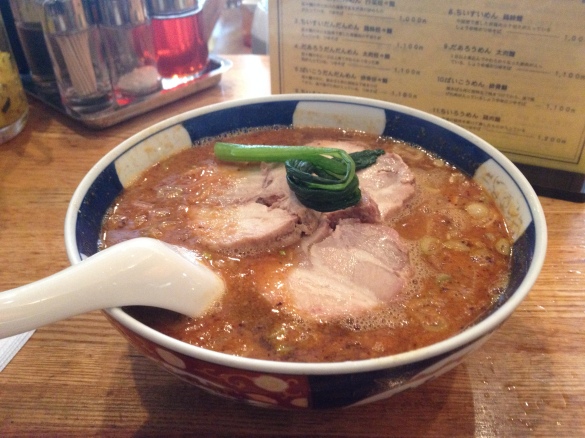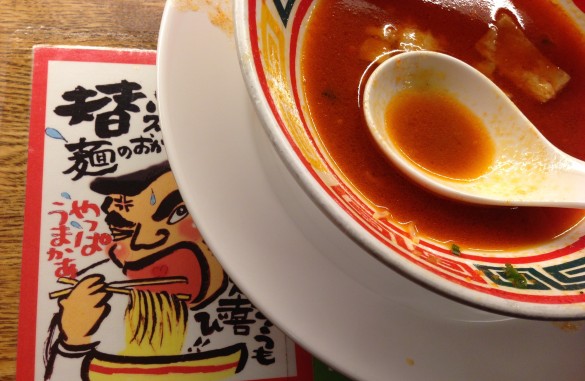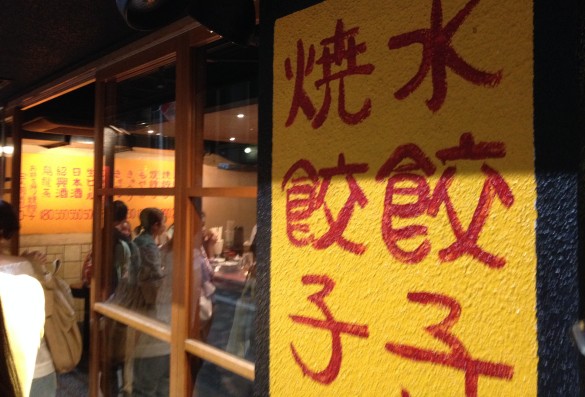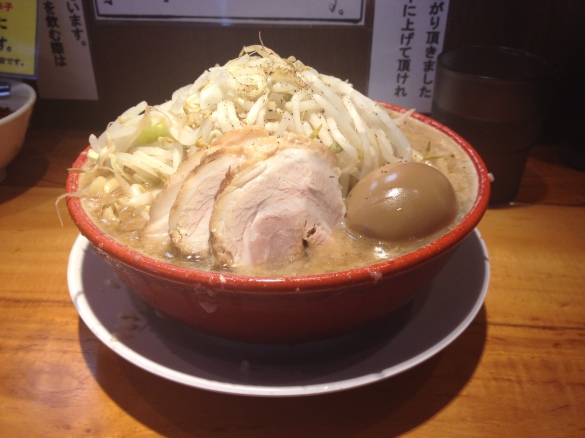 The Japanese sure love the Chinese-style spicy noodles known as tantanmen (or dandan mian in Mandarin Chinese). Previously, I wrote about two tantanmen joints in Tokyo, Rashohan in Kanda and Kisurin in Akasaka. Yesterday, I went to another well-regarded place called Yokarou (よかろう).
The Japanese sure love the Chinese-style spicy noodles known as tantanmen (or dandan mian in Mandarin Chinese). Previously, I wrote about two tantanmen joints in Tokyo, Rashohan in Kanda and Kisurin in Akasaka. Yesterday, I went to another well-regarded place called Yokarou (よかろう).
Monthly Archives: June 2014
Tonkotsu Ramen at Kyushu Jangara Ramen
 Tonkotsu ramen is arguably the most popular style of ramen in Japan. From mass market chains like Ippudo and Ichiran, to smaller and more local ones like Ikaruga, there are countless shops competing to feed the nation-wide addiction to thin noodles in creamy pork bone broth.
Tonkotsu ramen is arguably the most popular style of ramen in Japan. From mass market chains like Ippudo and Ichiran, to smaller and more local ones like Ikaruga, there are countless shops competing to feed the nation-wide addiction to thin noodles in creamy pork bone broth.
One well-known chain of tonkotsu ramen shops in Tokyo is Kyushu Jangara Ramen (九州じゃんがら). Perhaps the most popular branch of Jangara in Tokyo is in Harajuku, just down the street from Meiji Shrine. There always seems to be a line coming out of the place on weekends.
Dumplings at Harajuku Gyoza Lou
Chinese “Ramen” in Akasaka
 Ramen is synonymous with Japan, but it is commonly thought to have come from China sometime during the Meiji period. The term “ramen” is supposedly the Japanese pronunciation for the Chinese word for pulled noodles, lamian. Additionally, an alternative term for ramen is chuka soba, literally “Chinese noodles.” However, food historians dispute whether there was ever any direct connection between the two. As anyone who has had both ramen and lamian can tell you, the types of noodle dishes are very different.
Ramen is synonymous with Japan, but it is commonly thought to have come from China sometime during the Meiji period. The term “ramen” is supposedly the Japanese pronunciation for the Chinese word for pulled noodles, lamian. Additionally, an alternative term for ramen is chuka soba, literally “Chinese noodles.” However, food historians dispute whether there was ever any direct connection between the two. As anyone who has had both ramen and lamian can tell you, the types of noodle dishes are very different.
Even if they are unrelated, I thought it would be interesting to compare the original Chinese “ramen” with the Japanese version that has taken the world by storm. But in a country as obsessed with noodles as Japan, I could not find any restaurants that served fresh, hand-pulled, reasonably authentic lamian.
That is, until now.
Banana Sushi
 The Wall Street Journal reports that nationwide sushi purveyor Kura Sushi is offering caramel-banana nigiri on their menu.
The Wall Street Journal reports that nationwide sushi purveyor Kura Sushi is offering caramel-banana nigiri on their menu.
Macho Men: Ramen Bario in Toranomon
Ramen is traditionally stereotyped as a male thing, the heavy, meaty, carb loaded meal of men young and old. Although some ramen shops like Afuri have sought to attract a more gender diverse audience, Bario (バリ男) goes in the complete opposite direction. As the character 男 implies, it literally is ramen for men.

